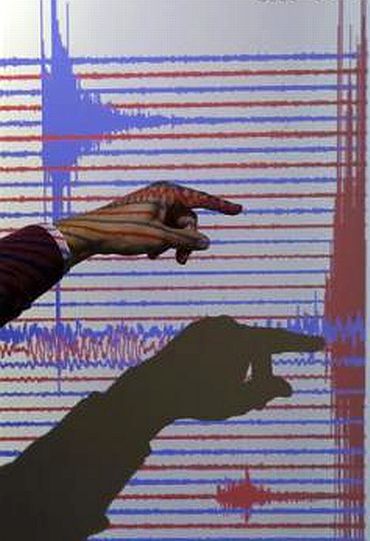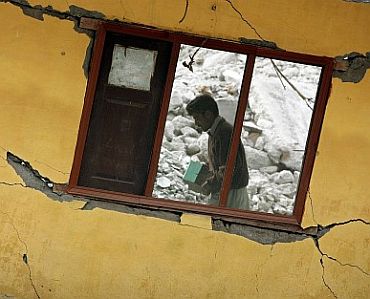
Seismologists at the Bhabha Atomic Research Centre have found that the earthquake counts go up steadily when the moon comes closer to the Earth (perigee) and also when it is Full Moon.
The scientists have also found that major earthquakes occur more in numbers when perigee coincides with Full Moon and New Moon than at apogee (position of moon farthest from earth) with similar combination, going up to a magnitude of 6.0 on the Richter scale, Dr Vinayak G Kolvankar, senior seismologist from BARC said.
His latest papers are published in 'New Concepts in Global Tectonics Newsletter' and 'Journal of Indian Geophysics Union'.
about this interesting finding...

It has also been shown that most of the global earthquake catalog data when systematically examined indicated seismicity variation with local time over 24 hours basis and observed the occurrence of earthquakes to be more during the night than during the day.
The earthquake counts go down during the day and it is minimum in the afternoon (between 3 pm and 4 pm) and then steadily goes up till midnight, Kolvankar said.
"This typical signature of the diurnal seismicity plots (DSP) seem to be consistent for the global earthquake data for different periods, seasons, longitudes and depths.
The drop in earthquake counts during the day, reduces for latitudes away from the equators and larger effect is seen for smaller earthquakes, which proportionally reduces for earthquakes with higher magnitude up to 5.0," Kolvankar said.

BARC scientists made an attempt to realign the earthquake data from standard catalogs for 36 years (1973-2008), to the different periodicities of the moon to check if any consistent patterns emerge out of this exercise, Kolvankar said.
Moon is the nearest planetary body to the Earth, which also produces the largest gravitational force on the Earth.
The quakes occurring on the moon were found to be largely governed by the Earth position particularly when moon is at perigee.
"However the role of moon on the occurrences of earthquakes had not been clearly established, and therefore this study was taken up with colleagues from BARC," Kovlankar said.

"We have made an attempt to realign the earthquake data obtained from large sets of standard earthquake catalogs, to the different periodicities of the Moon to check if any consistent patterns emerge out of this exercise," he said.
When the world earthquakes are aligned to new moon to full moon, the second half of all three sections provide increasing earthquake counts till full moon.
Kolvankar said, "in the first half, both Sun and Moon lie in the same quadrant with respect to Earth and in the second half portions they are in two different quadrants and net effect is that they both provide some sort of opposite pull resulting in the steady increasing number of earthquakes as Moon moves from first quarter to full Moon position, where Moon aligns with the Sun and Earth in opposite direction."

During transition from Full Moon to New Moon, the number of quakes progressively reduces till Moon reaches the third quarter.
This increase in the Earthquake counts from mid position (first and third quarters to full Moon) is about 5-6 per cent.
This increase was observed upto the magnitude of 6.0 on the Richter scale and for shallow focused events upto 10 km and feebly seen up to the depth of 35 km.
Again this rise is observed for all latitude ranges and most longitude ranges.

For earthquakes aligned to apogee-perigee-apogee (APA) cycles, the increase in the number of earthquakes counts from apogee to perigee was observed for earthquake magnitude range of 4-6 on the Richter scale.
Among the different 12 years periods (1973-1984, 1985-1996 and 1997-2008), this feature was noticed in all plots but more predominantly observed in the last period, probably due to much higher earthquake counts.
In 2008, BARC scientists had also reported about Sun inducing the semi-diurnal stresses on earth's surface, which trigger earthquakes and volcanic eruptions.